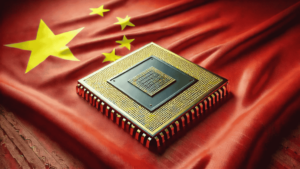Introduction
In the rapidly evolving landscape of quantum computing, China has once again made headlines with its groundbreaking Zuchongzhi-3 quantum processor. Named after the illustrious 5th-century Chinese mathematician and astronomer Zu Chongzhi, this marvel of modern engineering represents a significant stride in the global quantum race. But what exactly is Zuchongzhi-3, and why does it matter? Let’s dive into the details.
The Legacy of Zu Chongzhi
Zu Chongzhi, a polymath from the Liu Song and Southern Qi dynasties, revolutionized mathematics and astronomy with his precise calculations of pi (π) and celestial mechanics. Today, his namesake quantum computer embodies the same spirit of innovation, pushing the boundaries of computational science.
Development and Team
Zuchongzhi-3 was developed by a team led by Professor Pan Jianwei, a pioneer in quantum research often dubbed the “Father of Quantum” in China. The project, spearheaded by the University of Science and Technology of China (USTC) and the Chinese Academy of Sciences, builds on the successes of its predecessors, Zuchongzhi-1 (2020) and Zuchongzhi-2 (2021). Announced in late 2022, this third iteration marks a leap in both scale and capability.
Technical Specifications
1. Qubit Count and Architecture:
Zuchongzhi-3 boasts a 66-qubit superconducting quantum processor, arranged in a 2D programmable architecture. This surpasses Google’s Sycamore (53 qubits) and aligns with IBM’s 127-qubit Eagle processor, though direct comparisons require nuance due to differences in qubit connectivity and error rates.
2. Quantum Supremacy/Advantage:
In a landmark demonstration, Zuchongzhi-3 solved a Gaussian boson sampling problem in 1.2 milliseconds—a task estimated to take classical supercomputers over 25,000 years. This achievement underscores its quantum supremacy, a term denoting superiority over classical systems for specific tasks.
3. Error Mitigation:
Superconducting qubits are prone to decoherence and noise. Zuchongzhi-3 employs advanced error mitigation techniques, including dynamic decoupling (pulses to stabilize qubits) and optimized control algorithms, enhancing computational reliability despite environmental interference.
4. Coherence Time:
While exact figures are undisclosed, improvements in qubit coherence times (the duration qubits maintain quantum states) are critical to Zuchongzhi-3’s performance, enabling complex computations before decoherence disrupts the process.
Applications and Implications
Zuchongzhi-3 isn’t just a laboratory curiosity—it’s a tool with transformative potential:
– Quantum Simulation: Modeling complex molecular interactions for drug discovery and materials science.
– Cryptography: Advancing quantum-resistant encryption methods critical for cybersecurity.
– Optimization: Solving logistical challenges in industries like finance and transportation.
– AI Acceleration: Enhancing machine learning through quantum algorithms.
For China, this achievement is a point of national pride, cementing its role as a key player in the quantum arena alongside the U.S. and EU.
Global Context and Challenges
While Zuchongzhi-3’s qubit count is impressive, quantum computing’s true test lies in error correction and scalability. Current systems, including Zuchongzhi-3, operate in the Noisy Intermediate-Scale Quantum (NISQ) era, where errors remain a hurdle. Achieving fault-tolerant quantum computing—where errors are actively corrected—is the next frontier.
Comparatively, IBM and Google focus on increasing qubit counts and modular designs, while China emphasizes specialized tasks like boson sampling. This divergence highlights varied strategies in the quantum race.
The Road Ahead
Zuchongzhi-3 is a stepping stone toward practical quantum advantage—solving real-world problems faster than classical computers. Future iterations may integrate photonic or topological qubits, offering longer coherence times. Collaborations between academia, industry, and governments will be pivotal to overcoming technical barriers.
—
Conclusion
Zuchongzhi-3 epitomizes humanity’s quest to harness quantum mechanics for computation. While challenges persist, its achievements illuminate a path toward revolutionary technologies. As Zu Chongzhi once refined our understanding of the cosmos, his namesake quantum processor now expands the horizons of human knowledge—one qubit at a time.
—
Stay tuned for more updates on quantum breakthroughs!
—
References
– Pan Jianwei et al., Physical Review Letters (2022).
– University of Science and Technology of China (USTC) press releases.
– Historical context on Zu Chongzhi: Book of Sui.



